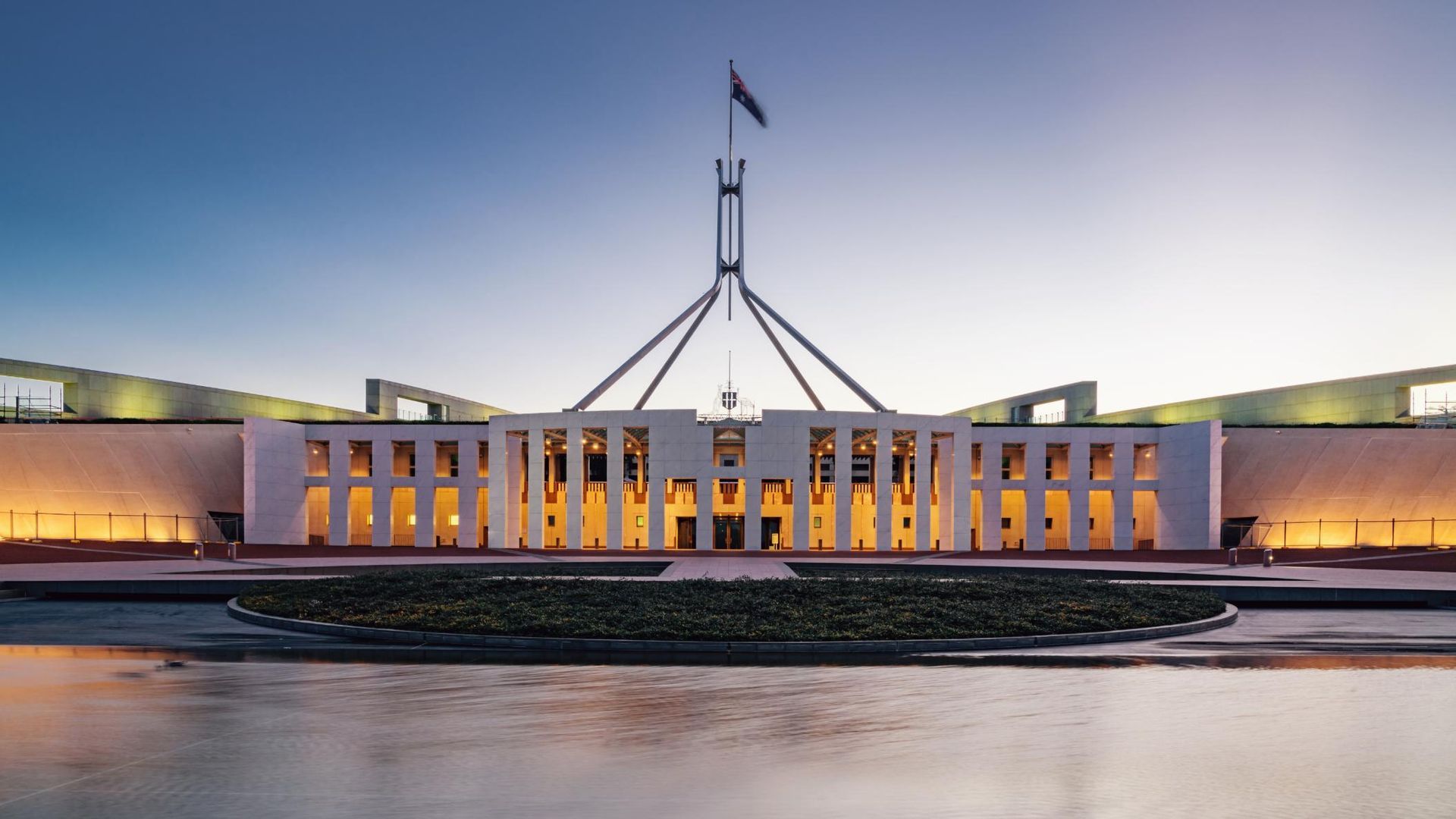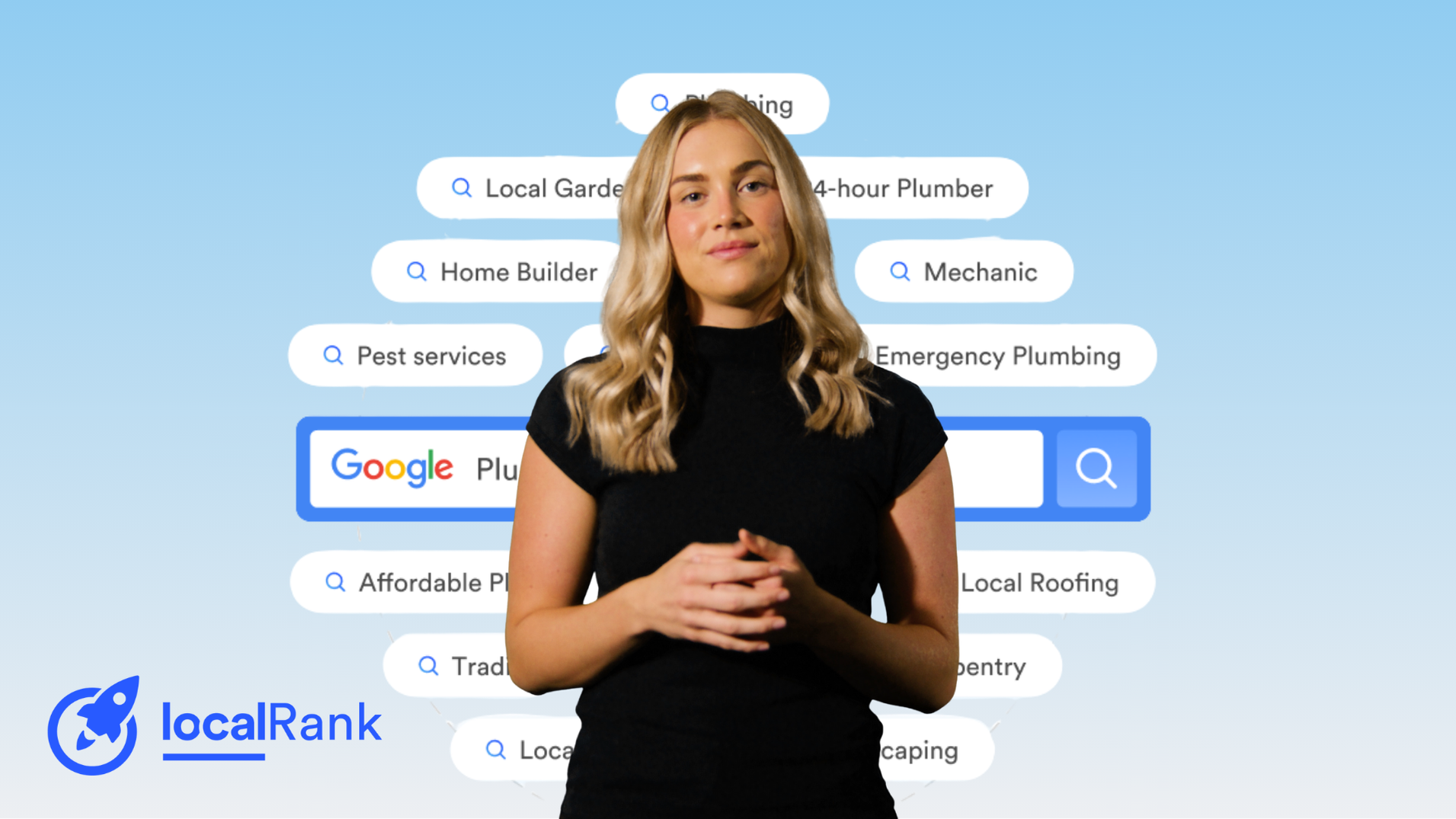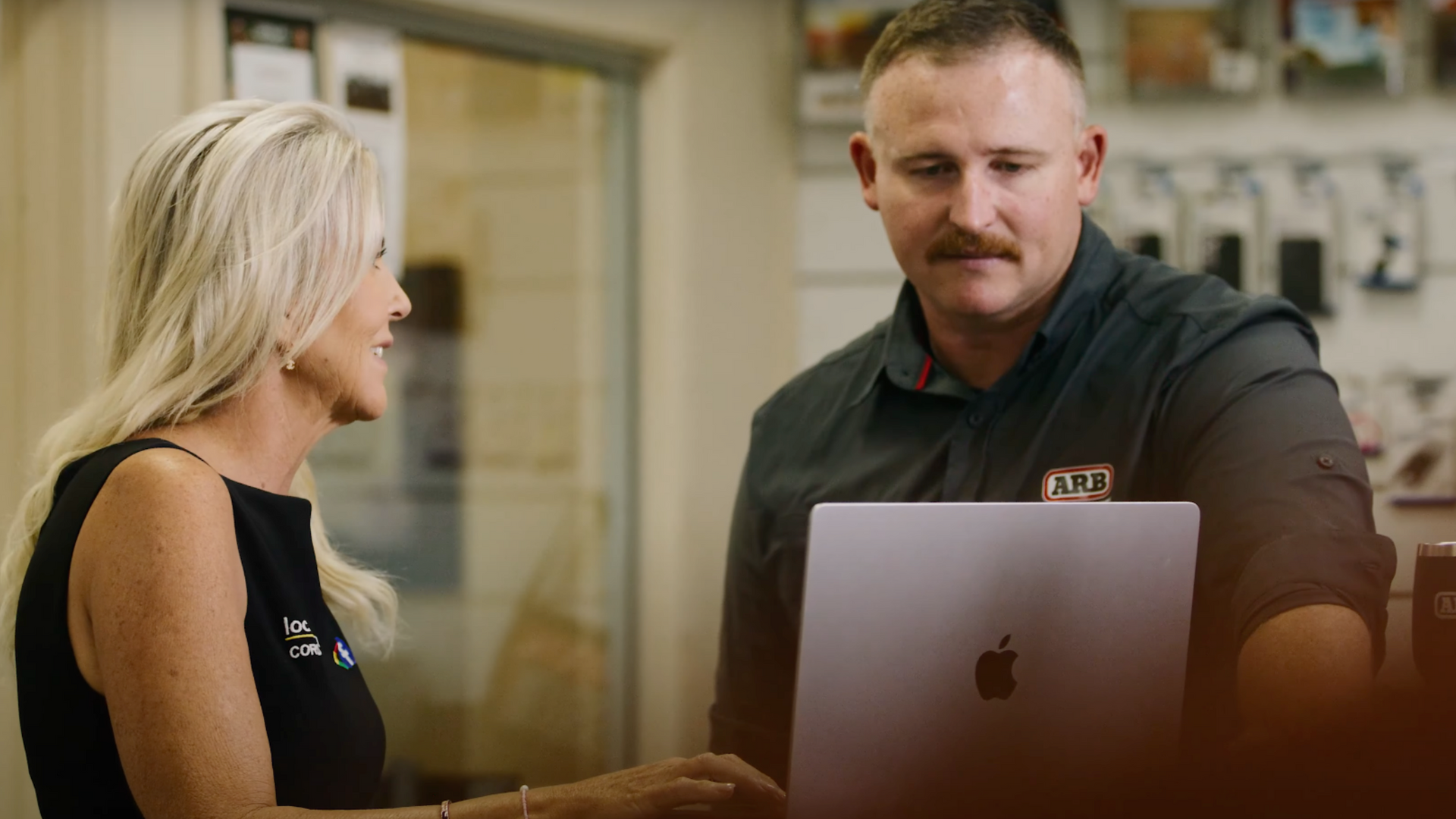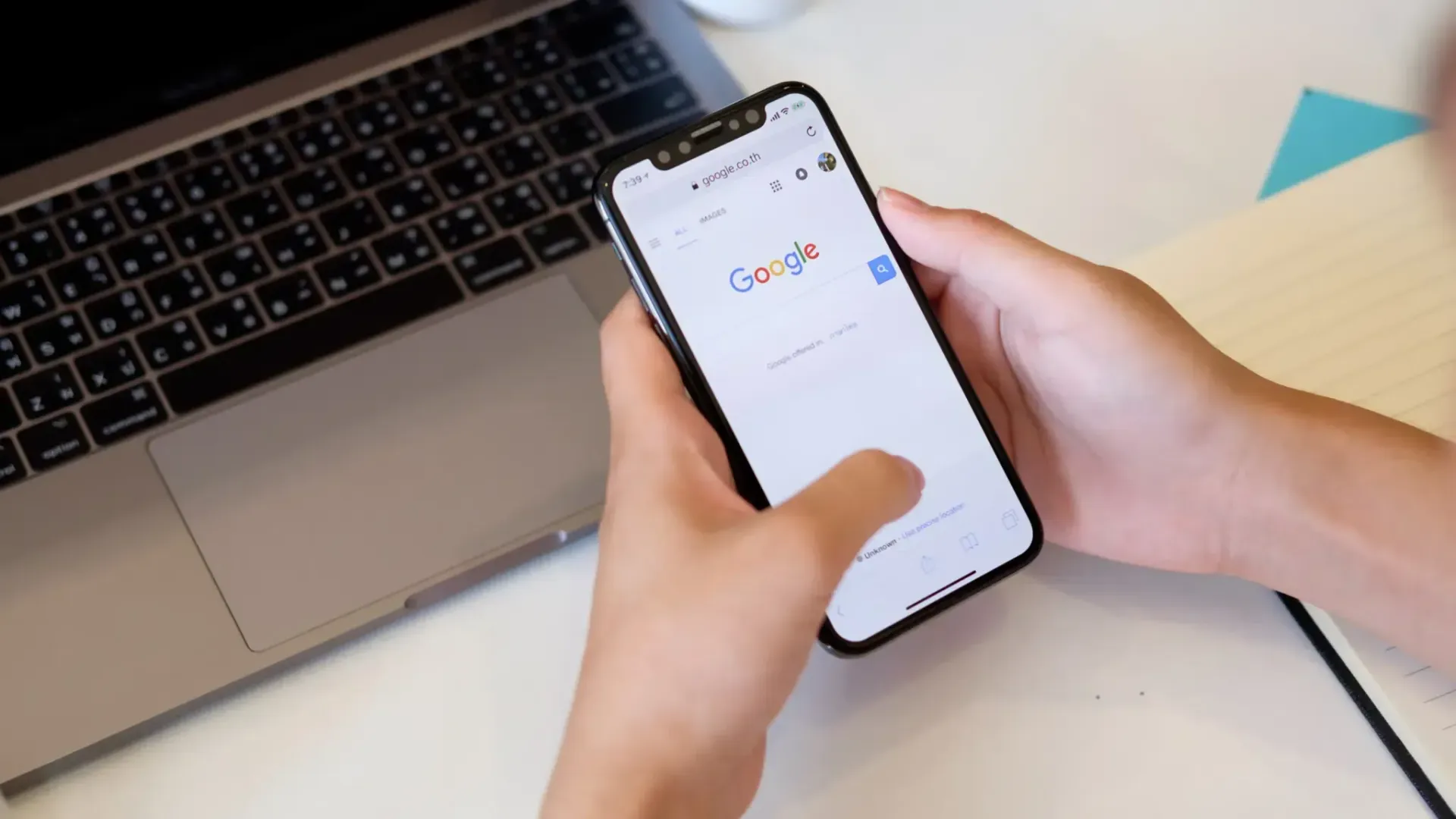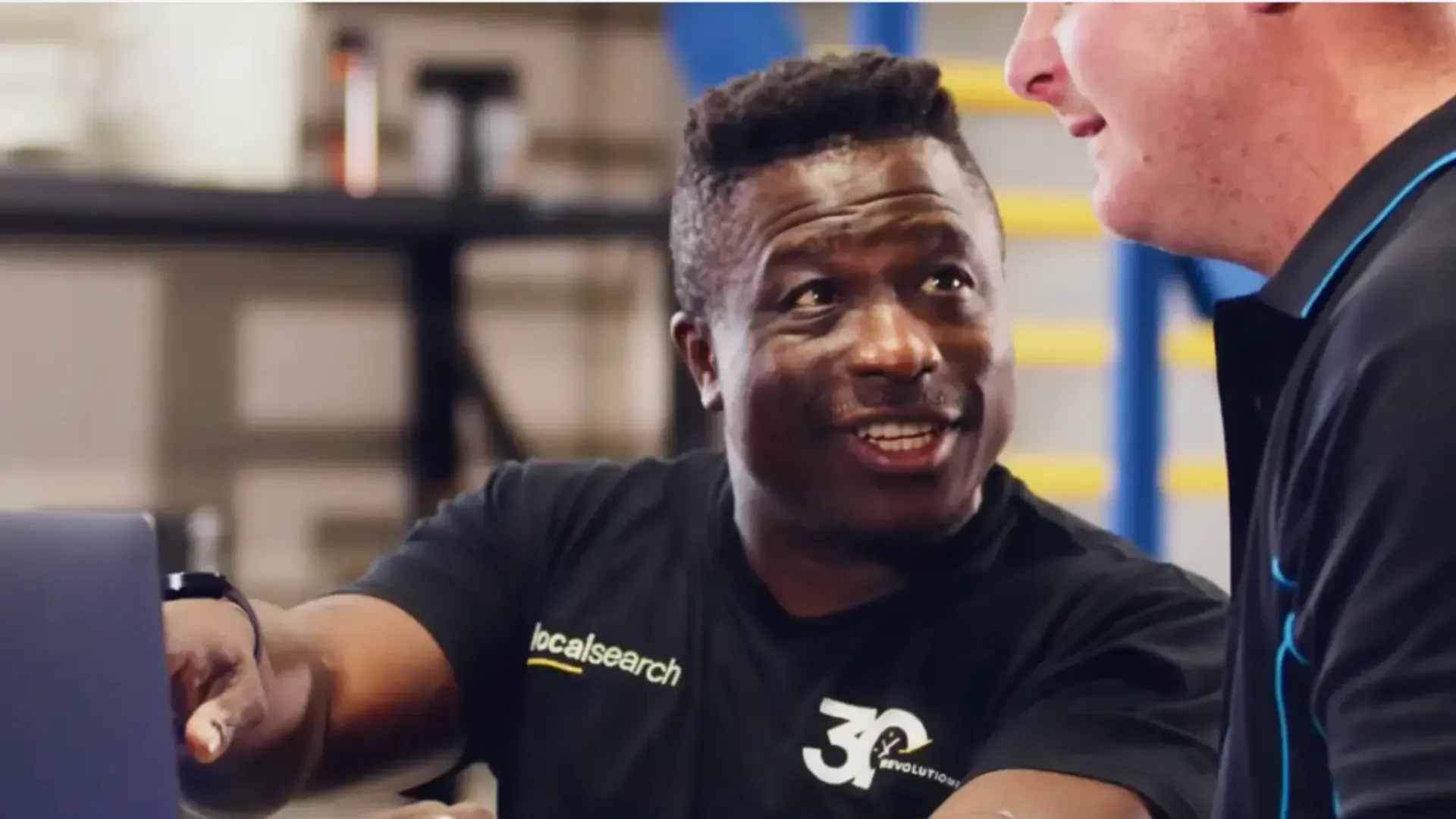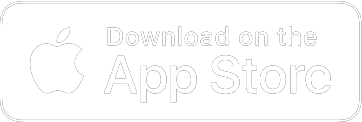Why You Need Brand Awareness Campaigns on Facebook
In this article
Related Articles
Tips to grow your business
from the experts
There are many types of Facebook Ad campaigns . For businesses attempting to run their own Facebook Ads, brand awareness campaigns are often forgotten for the temptation brought by the name of lead generation.
However, as we see with the businesses who turn to us for help , running lead generation campaigns doesn’t always mean growing your business.
In fact, in some situations, running brand awareness campaigns is what needs to happen and can save you a lot of time and money long-term.
To help you know when and why you need this campaign type on Facebook, we have created this guide to answer almost every question you could have.
If you have further questions, please reach out to our social media marketing specialists and we’d be happy to help.
You may also like: How to Create a Facebook Business Page
About Brand Awareness Campaigns
Types of Facebook Ads Objectives
When you create a Facebook Ads campaign, you’ll be asked to select one of three ad objectives:
- Awareness (with a brand awareness or reach goal).
- Consideration (with a traffic, engagement, app installs, video views, lead generation or messages goal).
- Conversion (with conversions, product catalogue sales or store visits goal).
While the objective you choose should be based on your business’s goal for running ads, it also depends if you’re running an ad or campaign for the first time.
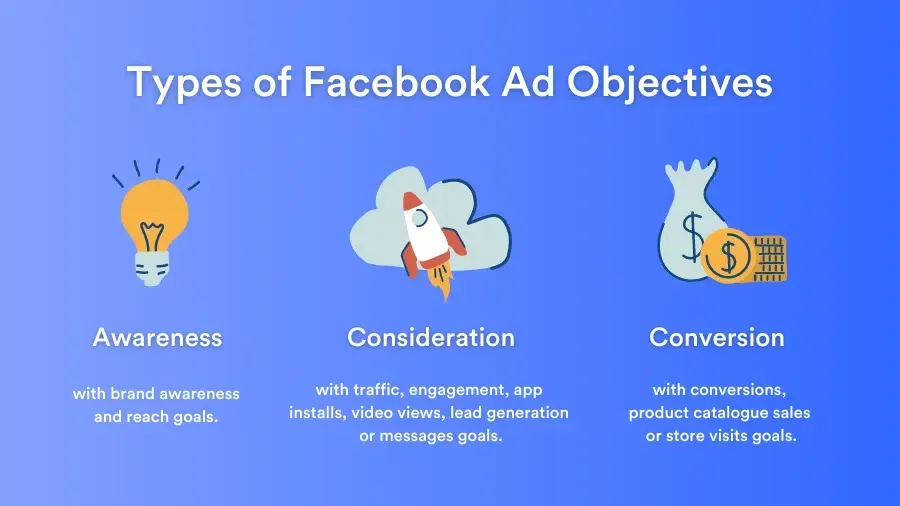
What is a brand awareness social campaign?
The purpose of a brand awareness Facebook campaign is to help Facebook users become familiar with your business. They also help Facebook learn about your campaign and target audience, refining who they send out your ads to in the future. But this does take time.
What a brand awareness campaign on Facebook does is blast your ad to your chosen audience, but in a wider net. Then, as the platform learns more about your business, the net becomes smaller, pushing your ad out to who is more likely to engage with your ads and business. In turn, this helps your ideal social media audience become familiar and more trusting of your business.
When to run a brand awareness Facebook campaign.
Brand awareness campaigns of Facebook are generally used in two different ways:
1. Before and during a lead generation campaign to build and maintain trust.
If you’re running a brand awareness as part of a lead generation campaign, you should start the brand awareness phase at least two to three months prior to the lead generation stage. This gives Facebook time to learn about your audience without wasting your money on higher-cost lead generation ads.
2. As part of a lower-cost social media campaign to build brand recognition and awareness.
You also want to let brand campaigns run as part of their own marketing strategy to target those top-of-the-funnel audiences. The top of the funnel is to make people aware of you before they need you and then in the interest phase for when they are potentially needing you, but not ready to make a decision.
Top 5 Reasons You Need a Brand Awareness Campaign
1. 81% of consumers say they need to
be able to trust a brand to buy
from them.
Say you’re in the soft drink aisle in front of the cola options. Which brand do you naturally gravitate towards? It’s very likely one of the two kingpins in the cola industry because you know you’ll receive quality products for the price. You know what’s in them.
With the 3.8% increase in new businesses in Australia between 2020 and 2021, the marketplace in almost every industry is becoming crowded. The days of monopolising a market are pretty much over.
If people aren’t familiar with your brand and business, it’s likely they may be familiar with one of your competitors. See where we’re going?
2. On average, it takes 5–7 brand impressions before someone remembers your brand.
If someone asked you to be in a committed long-term relationship on the first date, how would you feel? Now, how would you feel after 7 dates?
The same concept is proven with how many times someone has to see your brand to become comfortable, familiar and trusting in your business.
When you have the aim of getting in front of a lot of users as many times as possible, you want to run a brand awareness campaign. We speak about why this is the more affordable option below, but it also comes down to the content of the ad.
Your copy and imagery for a brand awareness campaign should be more relaxed and about why you do what you do, not necessarily what you actually do.
A good way to do this is by using client stories of how they’ve been able to achieve a goal using your product/services or even just a picture of your team at your location.
3. Brand awareness costs less than a lead generation campaign.
So, why can’t you just select a lead generation campaign with brand awareness language and then switch it up later? You can do this, however, you’re going to be paying a lot more to push your ad to a lot less people.
Brand awareness campaigns run at a lower cost than lead generation campaigns, helping you reach more people for your every dollar. So, while you certainly can run a brand awareness message with a lead generation campaign, it’s counterproductive to do so.
4. It helps prevent ad blindness.
Ad blindness is a phenomenon where people become oblivious to annoying ads. If they feel they’re constantly being sold to, they’ll simply scroll by your ad like it’s the motivational quote shared by Aunt Marge for the third time this week.
Now, brand awareness campaigns should be focused on why you do what you do, not necessarily what you do. Video marketing is great for brand awareness as it can tell a story. Tell your customers’ stories. Why do they come to you? Why are you so different?
Consider brand awareness ads they give, while lead generation ads are a take. You want to give before and more than you take to ensure people pay attention.
5. Apple’s iOS 14 update limits your audience targeting.
In 2021, Apple rolled out an update where apps (including social media sites) would be required to give their users a pop-up asking if they want them to be able to track their phone activity.
By saying no to this message, the platform wouldn’t be able to see how you engage with similar brands, apps, etc. As a result, the ads you’d see on your social channels would be less specific to what you’re actually interested in.
The Apple iOS 14 update means, depending on who you’re targeting, Facebook may not be able to target your ads as well straight off the bat as they once did. This is why brand or traffic campaigns are more important than ever before a lead generation campaign and on their own.
Learn more:
Why is the Apple iOS 14 update bad for Facebook users?
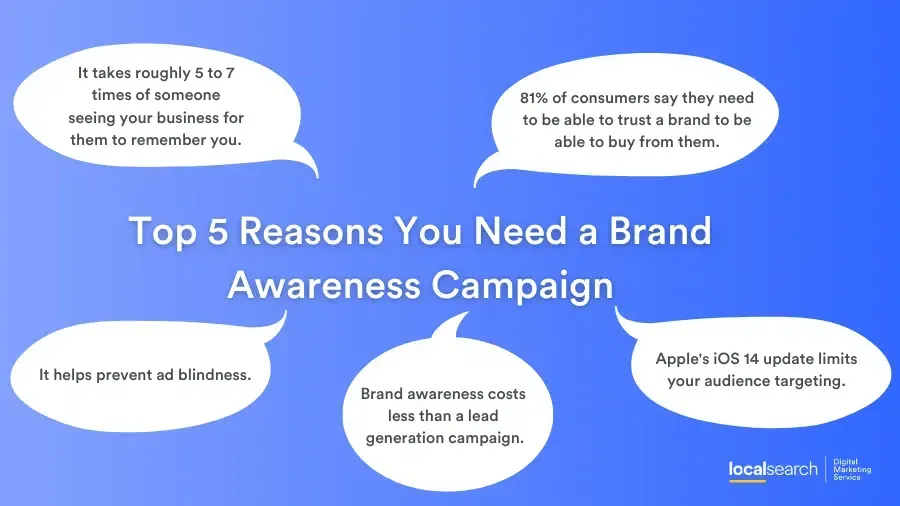
How to Measure Brand Awareness Campaigns on Facebook
8 Facebook Brand Awareness Metrics You Need to Know
1. Impressions
On Facebook, every impression is a time your ad has been displayed on a user’s screen. If you have a video Facebook Ad, the video does not have to be played for the impression to be counted.
As for organic traffic, it has a similar meaning with how many people have had a particular post or piece of content appear on their screen. It doesn’t necessarily mean they saw the content or ad, but it means they have received it.
2. Reach
Reach in Facebook Ads terms refers to the number of people the ad platform has pushed your ad to, not how many times they have seen it. The number of times the person has actually been served the ad is called an impression.
Your reach will likely be lower than your impressions as the reach is simply counting people, not views.
3. Cost-Per-Click (CPC)
Cost-per-click (CPC) is one of the many metrics allowing you to monitor the health of your ad. It tells you how much your ad is currently costing to have someone click on your ad, with clicks including interaction, a like, share or a click through to your website.
You need to keep an eye on your cost-per-click as it can be influenced by the time of day, day of the week, the time of year and more. By monitoring your CPC, you can tell if your ad is engaging or missing the mark, indicating if your ad is getting in front of the right people or if your ad needs optimising further.
4. Cost-Per-Mille (CPM) or Cost-Per-Thousand-Impressions
Cost-per-mille (CPM) or cost-per-thousand impressions measures how much you pay for your Facebook Ad to be delivered to 1,000 Facebook and/or Instagram feeds.
CPM charges you your agreed bid amount per 1,000 impressions. For example, if your bid is $2 per 1,000 and you have a budget of $30, your ad would be shown 15,000 times.
CPM is typically used in brand awareness campaigns to reach as many people as possible for as little as possible. The amount you pay per 1,000 is determined by your ad specifications, including your audience, budget, bid, objective, ad placement and quality, season and your industry.
However, you also don’t have to only use one bid either. You can let the Facebook algorithm do what it does best and showcase your ad at the best rate. This can be better than setting a bid cap as it’s a more realistic representation of what your ad actually costs to get it out to the public.
5. Click-Through-Rate (CTR)
Your Facebook Ads click-through-rate (CTR) is the percentage of people who saw your ad who clicked through to find out more or get in touch.
To work out your click-through-rate, divide the number of link clicks (see below) by the number of impressions and then times it by 100. So, for example, if you have 275 clicks and 25,000 impressions, your click-through-rate would be 1.1%.
6. Frequency
The Frequency metric from your Facebook Ads is the average number of times an individual user has been shown your ads. It’s worked out by taking your impressions and dividing it by your reach, but it is still an average, not an exact number.
For example, your average may be 4, but some people will have seen your ad twice, while others have seen it 7 times.
7. Overall Clicks
An overall click is measured whenever a user clicks on any part of your ad, including link clicks, on the image, etc. It’s good to know the difference between overall or all clicks and link clicks as link clicks are considered meaningful to the ad, but overall clicks may indicate where followers are coming from or other brand awareness considerations.
8. Link Clicks
Link clicks on your Facebook Ads are counted when a user has clicked through to where you are directing them from the Ad, such as to a page or form. They are considered meaningful clicks as they indicate potential success of your ad.
For example, if you’re receiving a lot of link clicks but not many conversions, it may indicate where you’re pointing people is not resonating with your audience or is not optimised for conversions.
How to Know Your Brand Awareness Campaign is Successful
1. Decrease in ad cost.
As Facebook learns about your campaign and audience, they’ll start sending it out to people who will be more interested in what you do. The result of this, you’ll start to see more reach for your dollar, particularly with bidding options like cost-per-thousand.
However, your ad cost decreasing relies on your ad copy and imagery to be optimised for the type of campaign and audience. So, if you’re not seeing a decrease in cost over time, you may want to make some tweaks.
2. Higher overall clicks.
The purpose of brand awareness campaigns is not to generate leads or even clicks. However, if you’re experiencing higher overall (all) clicks over time, this could indicate more likes, people wanting to make your imagery bigger or clicking through to your page. This is the whole point of this marketing campaign, so is a good way of measuring brand awareness on Facebook.
3. Increase in social media followers and organic engagement.
One way to track brand awareness is through your organic performance. While this isn’t a direct brand awareness measurement for your campaigns, it can indicate more people visiting your page, which if you’re experiencing good overall clicks, can be a connection.
For example, say people are seeing your brand name through your ads and they want to see more of what you actually do and what you’re about. They click through to your page, give it a look and see they like your content. Then, they give you a follow.
This is a perfect example of how organic and paid content work hand-in-hand and is something you need to consider in your strategy.
If your brand awareness efforts aren’t demonstrating these results, it’s time to talk to a social engagement expert , like Localsearch. We can help you resonate with potential and existing customers, helping you build awareness and improve your social media reach.
Contact us on 1300 360 867 or request a free social ads quote to learn more about aligning a clear strategy to grow your company online.

